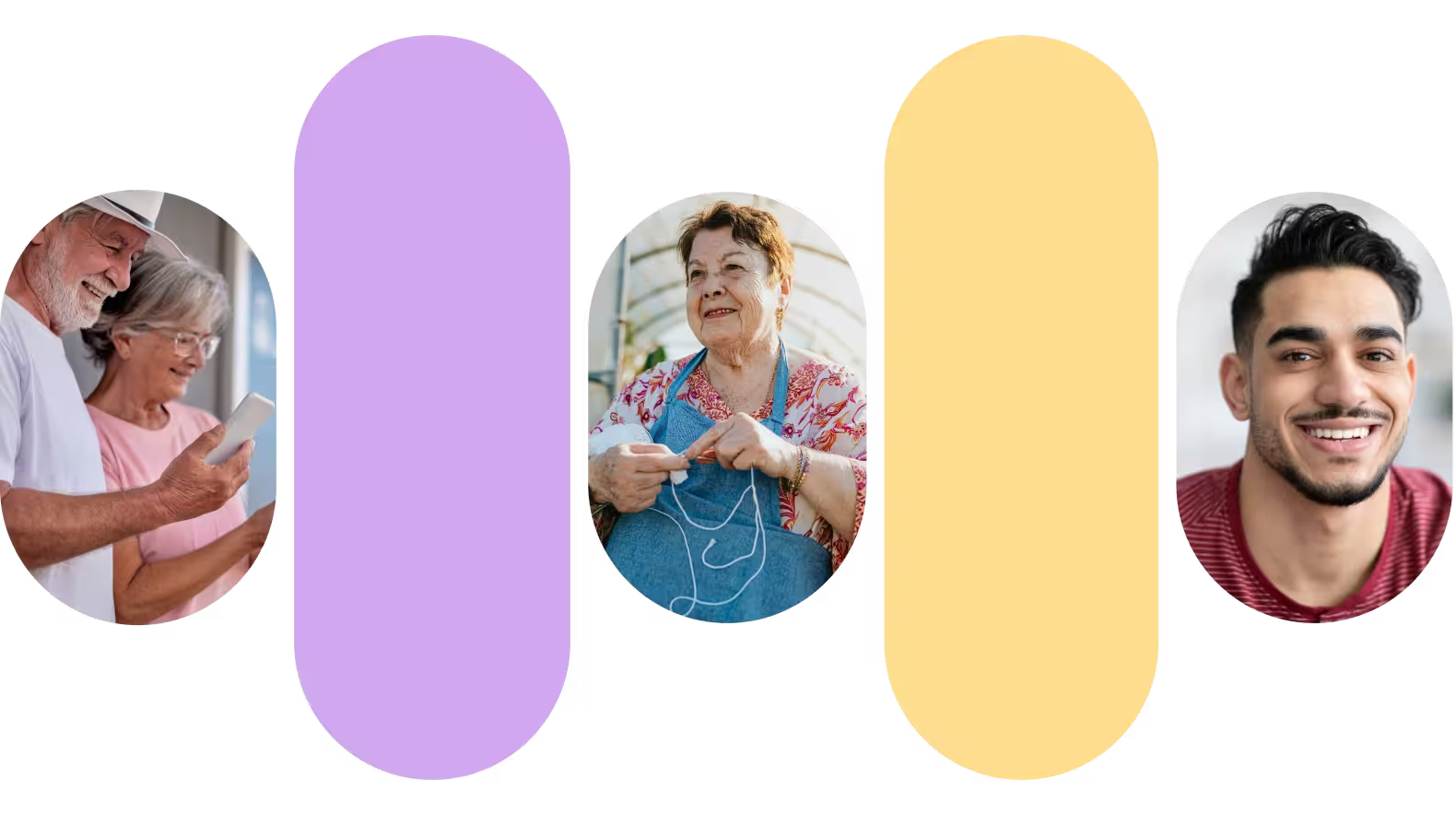Smart Home Technology for the Deaf and Hard of Hearing
Curious about how smart technology can work for your home? Read how smart home technology can improve your life quality!

Almost everyone is familiar with the “Hey, Alexa!” catchphrase. Are you curious about how smart technology can work for your home? Read on to learn more about adaptive technology with smart home systems!
What is Smart Technology?
Smart home technology involves devices linked by Wi-Fi that allow users to manage systems from a computer or smartphone. An example of smart technology is a refrigerator that sends an alert when milk is low or even reorders it for you. A popular one is a video doorbell that sends alerts when someone is at the door or when a package is delivered.
A challenge for the deaf and hard of hearing is that many alerts are auditory or verbal, such as interacting with Alexa, asking what the weather is today, and waiting for an automated response. Other examples are needing to hear a loud alarm for a fire or carbon monoxide system or a chirp for a doorbell. We will go into more detail below on how to make it work to meet your needs.
Benefits of Smart Technology
Time Savings
From automated reminders to call your family, to notifications of package delivery, to light dimmers set on timers, smart technology helps reduce the cognitive and mental load of household management. The fewer “small tasks” you must remember, the more time you free up.
Increased Safety
It also improves safety, alerts to possible intruders, smoke, and fire, and increases the ease of reaching emergency personnel quickly. Since you also receive alerts when away from home, you can still catch a beginning house fire speedily and take quick action to save your house.
Real-time Communication
Communication with family and friends also improves since multiple users of smart home systems can be added. Your child can be notified when the dishwasher is done without parental reminders.
Cost Savings
It can also save on expenses such as utility bills by lowering the temperature of the house when you're away from home or notifying you to replace a part before it breaks and incurs costly repairs.
Added Independence
A key benefit for the deaf and hard of hearing community is increased independence and autonomy. The convenience provided by technology helps people feel more in control of their day-to-day activities and rely less on others for assistance.
There are a few downsides to smart technology, but the most common ones are the expenses of installing it, the potential complexity and time consumption of some system setups, and the need for reliable Wi-Fi to operate it.
Types of Smart Technology

Mainstream Systems
Smart technology can be a joint interconnected hub or separate devices that operate independently. There are smart home hubs, which are the control centers of all technology in the house, including alarms, heating, light systems, window blinds, appliances, lawn care, security, and even entertainment, such as TV and background music.
The most common hubs used are Amazon Echo, Google Nest, and Apple HomePod, which rely on voice-activated commands. Amazon Echo could incorporate sign language recognition commands in the pipeworks, but in the meantime, having separate smart devices linked with IFTTT would make it easier to adapt and customize to your needs.
Another system option is Home Assistant – a free and open-source system that offers over 2,800 integration possibilities and can be run on a Raspberry Pi or server. Many smart devices are compatible with this system. Some possible integrations to try:
- Using smart kitchen lighting to flash when the oven timer or other appliances are finished cooking.
- Connecting a Ring doorbell or similar camera doorbell to smart lights, which then flash when someone is at the door.
- Setting up SMS notifications from smart devices to go to a dedicated smartwatch for vibrating alerts.
- Creating an if/then trigger using IFTTT to turn on all household lights in a specified event, such as a carbon monoxide alert.
A whole subreddit and YouTube playlist exist with tutorials on usage possibilities and how-to’s.
Single use smart devices can add convenience to a deaf or hard of hearing user. Many deaf and hard of hearing have had the experience of waiting by the window out of fear of missing an expected visitor. The smart doorbell makes that anxiety and hassle a thing of the past. Devices like the Ring doorbell mean you get automated notifications and camera feeds on your phone so you can see who is at your door.
Deaf Created Systems
Created by a Deaf CEO and run by an all-deaf team, SquareGlow is a smart lighting system compatible with Amazon Alexa, Google Assistant, and Siri. The square lights can be set up to flash in up to eight different colors depending on their meaning. A red flash can be a critical alert, blue for kitchen appliances, and green for the front doorbell, just to name a few possibilities.
In addition, they offer a centralized app for camera views, and sharing accounts with other household members. Anyone can trigger an agreed-upon color flash to alert a deaf or hard of hearing person and get help. Notifications can be pushed to a smartphone or watch, and products come with a one year warranty.
Conclusion
Smart technology has changed how many people live, including the deaf and hard of hearing. These devices offer increased independence, more seamless communication between family members and friends, and added security and safety. Exploring the smart options available will help make your home environment more comfortable and accessible.














